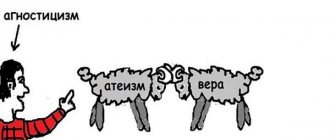.
It may seem that leadership is the same as the process of leadership itself, but if you look at the situation in detail, they are different things. The manager is responsible for ensuring that the company’s employees carry out everything efficiently and accurately according to his orders. The leader tries to direct employees to work in one or another area of activity. According to the manager, every employee of the enterprise should be interested in success, therefore he is obliged to work creatively, his impulses should benefit the enterprise. As practice shows, model 2 of behavior is much less common, although the effectiveness is higher.
Who is a leader
By psychological and sociological standards, a leader is a person who occupies first place in a group, influencing people to achieve a common goal. The traits that such a person must have: the ability to make complex and responsible decisions, and be ready to bear responsibility for them.
He should not care about his own benefit, but about the general one, captivate and lead people with him voluntarily, and not under duress. He always has natural charisma, therefore he enjoys trust in the group and becomes an authority.
The leader occupies the first place in the group, authority for its members, directing the movement. He is selected from among the group members based on its needs and expectations. Such a person is an integral part of the team, which finds the best in its environment. It provides ways to achieve goals and meet the needs of group members. So far everything is going well, there is support, and no changes are taking place within the group.
Leadership can be seen in many areas: among students, in work teams, in companies, in communities of like-minded people. The leader in such teams works based on his authority.
Behavior styles
It is often on the basis of behavioral style that a manager is distinguished from a leader. This behavior is usually determined by the individual qualities of a person, so it cannot be said that some of them are characterized by one style, and another by another.
Experts have identified 3 styles of managing a work team: authoritarian, democratic, liberal.
An authoritarian management style is typical for managers. This is constant strict control of the performed duties of employees and their punishment in case of certain problems. With an authoritarian management style, the individual qualities of the employee are not taken into account. It is considered as a robot needed in the company to perform certain functions. This management style is productive for the company. It is profitable and productive. Employees who do not feel needed sooner or later quit, thereby losing everything that has been earned over a long time.
Democratic style is characteristic of leaders. The opinion of even the most ordinary employees is taken into account, which is extremely important. The key decision on almost all issues is made by general voting. A leader using this strategy feels like an employee like other officials, regardless of status. The democrat always listens to the wishes of employees and does everything to make everyone feel comfortable working in such a company. This style is the most effective. Each employee sees that the leader understands, values and respects him. They try to repay him in kind, doing their work efficiently and striving for new heights. There is a friendly atmosphere in the team, employees communicate well with each other and are ready to help each other at any moment (on issues that directly relate to work).
The liberal style is characteristic of those managers who are not interested in the success of the company or the needs of employees. They shift management responsibilities to other employees, and they themselves do not even know who works for them. This is the most failed management style that leads a company to bankruptcy.
The essence of a leader
This is a person with authority in the organization, makes responsible decisions and implements them in the group. He makes decisions about what and how his assistants and subordinates should do. His task is to organize work so that it is effective. To do this, the head of the enterprise must think through a strategy, a plan that will lead to the best result. He must be able to get his subordinates to get the job done and done correctly and on time.
The manager is obliged to maintain good relations with employees and be able to explain to them what their responsibilities are. Be interested in the development of your organization, be able to plan to increase the amount of work and improve subsequent results.
A leader must be purposeful and responsible, want to achieve more in his work, better results. To do this, he must exert influence on subordinates, which is determined by his position in the organization and powers. The manager directs the work of the team and is responsible for the results.
Phenomenon
What makes people recognize a leader in one person and ignore another?
Society is structured in such a way that it must be managed, otherwise a small or large social group disintegrates, the organization is disrupted, and chaos ensues .
People need a leader, since most members of society are not able to independently choose their own path of development; it is easier for them when the leader indicates in which direction to move.
What is the difference between management and leadership?
The differences between the concepts are that the leader is at the head of official relations in a group of people, the leader - informal ones. The first is prescribed for social reasons, the second for psychological reasons.
The leader in the group is determined spontaneously; the leader is not chosen, but appointed.
The leader, as a representative of the group, is closely connected with it, and the manager, on the contrary, is often abstracted from it. Leadership concerns interpersonal relationships, management concerns formal relationships.
The manager, as an official, can apply legal sanctions; his influence on subordinates is determined by his position. Therefore, he can be called a formal leader. Someone who is chosen simply for a leadership position may be one regardless of the position he holds in the company. However, a leader can also be a manager, which increases the efficiency of his management.
Differences can be seen in the following areas:
- Goals. Managers do not set goals themselves, but achieve those already set by someone, that is, they take a passive position. The leader sets goals himself; they serve to change the team’s attitude towards the matter.
- Order. The manager builds relationships with subordinates in accordance with hierarchical views. Leaders manage a team of people who share a common vision, rather than people who are brought together to do a specific job and who are not bound by common ideas.
- Control. The manager controls the behavior of subordinates, the leader tries to inspire and motivate the team, teamwork is based on trust.
- Experience. The person at the head of management makes decisions and solves problems based on past experience and tries to prevent problems. Leaders love to come up with new solutions that are effective at the moment.
If influence on a group of people occurs through skills, abilities, abilities and other personal resources, then this is informal leadership. Influence is based on the recognition by others of the qualities and superiority of the main person as an individual. If influence is based on the position of official position and position held, it is formal leadership.
Premium Content
A download link for this presentation and other premium content is available to paid subscribers. Sign up for a paid subscription on the “Training Technology” website and get full access to 13 ready-made trainings, 256 slides, 112 mini-lectures, 619 exercises, 41 videos, etc. It's not expensive at all.
Source
| Leadership | Management | |
| Definition | Leadership refers to “the ability of an individual to influence, motivate and enable others to contribute to the effectiveness and success of the organizations of which they are members.” | Management involves directing and controlling a group, including individuals or entire organizations, to coordinate and coordinate the group's actions to achieve a set goal. |
| Personality characteristics | Leaders are often described as bright and eccentric individuals with outstanding charisma. However, they can also be loners or people who don't like publicity. They calmly take risks, sometimes seeming desperate or crazy. Almost all leaders have a well-developed imagination. | Managers are characterized by a rational, controlled approach to solving problems. They often focus on goals, structures, personnel, and resource availability. Managers are characterized by personal characteristics such as persistence, strong will, analysis and intelligence. |
| Orientation | Personnel orientation | Task Orientation |
| Focus | Personnel management | Activity management |
| Expected Result | Achievements | Developments, results |
| Approaches to solving the problem | A simple approach to solving problems and finding new, creative solutions. Using their charisma and determination, leaders stimulate, motivate and guide others to solve problems and achieve success. | Developing strategies, policies and practices to build teams and promote ideas that enable successful operations. This empowers people and helps preserve their views, values and principles. This combination is believed to reduce inevitable risks and promote success |
| Approach to Risks | Taking risks | Risk Prevention |
| Role in the decision-making process | Mediation | Participation |
| Styles | Transformational, consultative and participatory | Autocratic, authoritative, transactional, autocratic, consultative and democratic |
| Means of exercising power | Charisma and influence | Formal authority and position |
| Organization | Leaders create followers. | The manager needs subordinates. |
| What does it address? | To the heart | Towards reason |
Comparison table
The main differences between a manager and a leader can be seen in the table.
| Differences | Leader | Supervisor |
| Purpose | Unofficial | Official |
| Relationships | Interpersonal | Formal |
| Influence on subordinates | Due to moral qualities | Conditioned by position |
| Reasons for appointment | Psychological | Social |
Basic Concepts
Leadership has been studied by many authors, so various concepts of this phenomenon have been put forward.
- Leadership Trait Theory . Those personal qualities and characteristics of individuals that distinguished significant people in world history were identified. The approach is based on the fact that leaders are born; it is impossible to become one without certain inclinations.
- Concepts of leadership behavior. At the beginning of the twentieth century, the study of behavioral characteristics inherent in leaders began. As a result, a classification of leadership styles was created. These include Lewin's concept, McGregor's research, the Likert management system, and the concept based on reward and punishment.
- Situational Leadership Concepts . Based on the fact that it is necessary to use the leadership style that is most suitable for a particular situation. Directive, supportive, and participative leadership is highlighted.
conclusions
The manager builds interaction with subordinates on the basis of the rights and responsibilities accepted in the organization, strives to maintain discipline and order. It determines how to achieve the goals set by other people. The leader determines the goals of the group independently, based on his own desires. At the same time, he does not command, does not manage, but, as it were, leads others.
The remaining members of the group act as followers, not subordinates, towards him. The difference in this regard is that people obey the leader and receive reprimand or reward for this. A leader manages people without control; his influence is based on trust.
There are also similarities between leadership and management: one person can be both. They have power, for the first it is personal, for the second it is organizational. Both can influence others, but influence has different goals - personal or company goals and different ways to achieve them.
Story
In ancient times, leaders were often endowed with superpowers.
They had the gift of persuading and subduing . Generals, leaders, pharaohs were endowed with great intelligence and power given by the Higher Powers.
In 1517, Machiavelli wrote The Prince . This began the serious study of leadership and the advancement of various theories.
Fr. Galton proposed in 1869 the theory that leadership traits are innate
In the first half of the 20th century, serious study of the phenomenon of leadership began. It was believed that a leader must have a set of certain character traits.
These are mental, physical abilities, as well as the need for power, dominance, self-confidence and other personality traits.
Person-centered approach
The first developments of the personality traits approach appeared at the beginning of the 20th century, when certain qualities of the most effective managers were identified. According to this theory, the best managers should have such qualities as high intelligence, attractive appearance, common sense, initiative, honesty, education in psychology and economics, and self-confidence.
Another version of the qualities of a true leader is offered by Samuel M. Walton, owner of the Wal-Mart supermarket chain. This man topped the list of the world's richest people in 1985, according to Forbes magazine. He outlined his idea of leadership in the book “Made in America. How I Built Wal-Mart,” which lists the 10 most important commandments of a leader:
- Dedication;
- always share their profits with their employees;
- stimulate your employees not only financially;
- share your knowledge;
- value the activities of their employees and do not skimp on praise;
- to celebrate success, it may embarrass competitors;
- listen to the opinions of your employees;
- to stay ahead of your customers' expectations;
- to keep track of your expenses;
- swim against the tide and not repeat the mistakes of others.
Fulfilling all these requirements, according to Samuel M. Walton, will lead the company to success in the near future.
This was the first stage in the formation of personality theory of leadership, but in the 1940s, scientists continued to study the relationship between personality traits and leader success, but they did not reach a consensus on the specific set of qualities that make a great leader. As a result, in 1948, Stogdill presented a comprehensive review of leadership research in which he noted that the study of personality traits continued to produce conflicting results. He also highlighted a number of qualities inherent in leaders. According to him, such people are distinguished by high intelligence, thirst for knowledge, reliability, sense of responsibility, ability to act and socio-economic status. At the same time, Stogdill found that effective leaders exhibit different personality traits in different situations. He later came to the conclusion that one does not become a leader by birth, but it depends on the situation. Thus, Stogdill concludes that “the structure of a leader’s personal qualities must be related to the personal qualities, activities and tasks of his subordinates.
Problem
Leadership is always a matter of exerting power, the ability to influence.
The leader has to prove his superiority. He must constantly fight for power, otherwise someone else will take his place.
It’s hard for both formal and informal leaders. The former are responsible for the actions of their subordinates. The latter have to use complex techniques of persuasion and retention of power.
A leader must always be collected, active, and be able not to show weakness. Not every person is capable of taking such a position.
In an organization, the problem often arises of which leader to put in a position - dominant, soft, democratic. The right choice determines how well the team will work .











